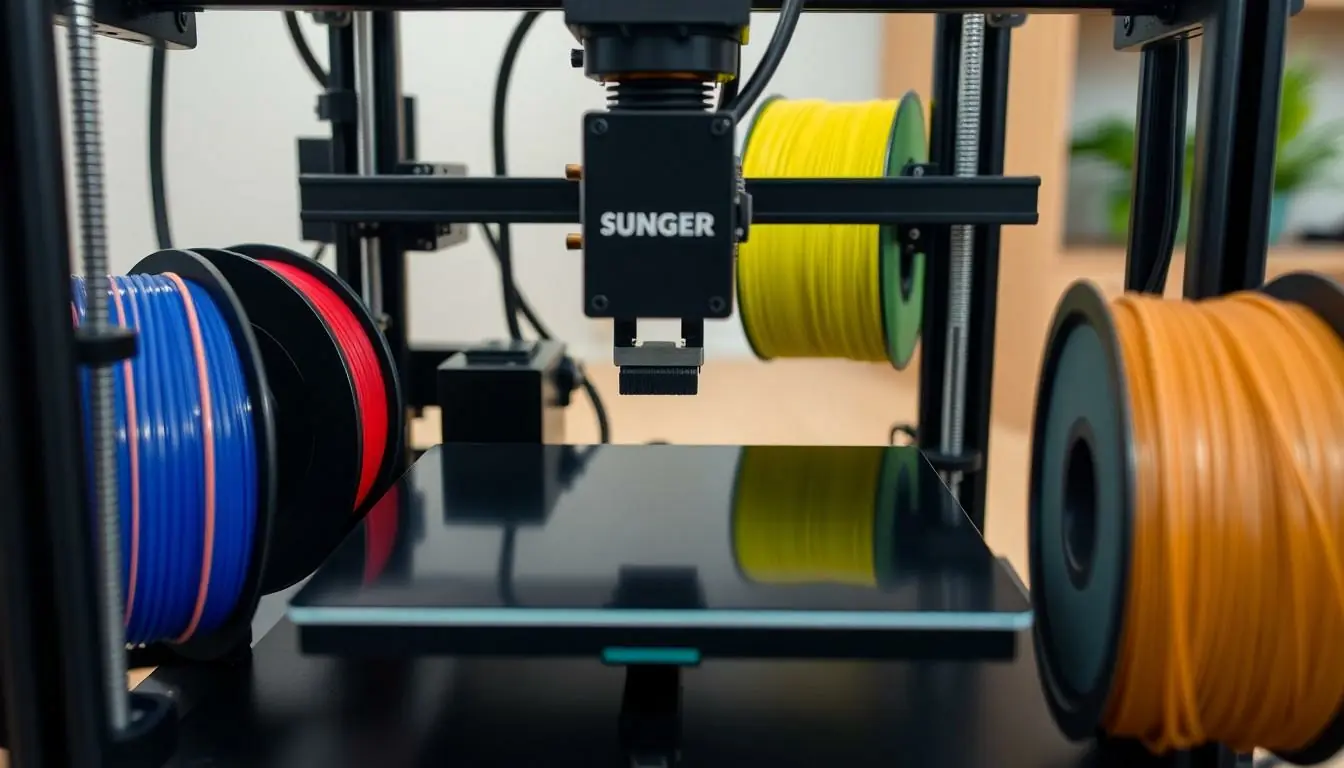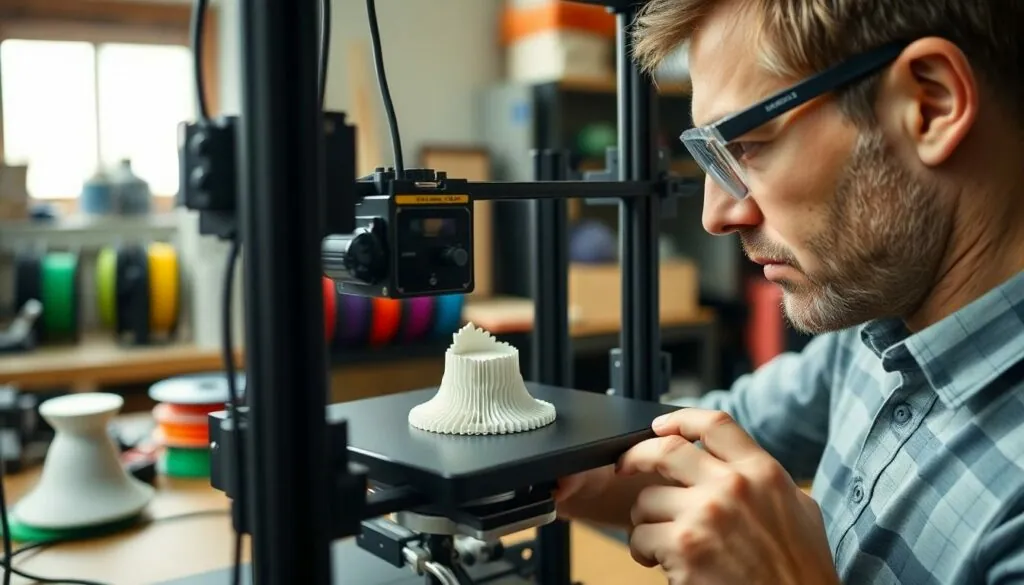Table of Contents
ToggleIn the world of 3D printing, layer height is like the secret sauce that can make or break a project. Imagine trying to bake a cake with the wrong amount of flour—your masterpiece could end up looking more like a pancake. Similarly, layer height determines the quality and detail of your printed objects, influencing everything from strength to finish.
Understanding Layer Height 3D Printing
Layer height plays a significant role in determining the quality and characteristics of a 3D print. It refers to the thickness of each layer of material deposited during the printing process.
What Is Layer Height?
Layer height specifies how thick each individual layer of filament is when printed. Common values for layer height typically range from 0.1 mm to 0.3 mm. Each printer may have its own optimal range for different materials. Smaller layer heights often produce more detailed prints, making them ideal for intricate designs. Conversely, thicker layers reduce printing time, which can benefit larger models.
Importance of Layer Height in 3D Printing
Layer height directly influences print strength, surface finish, and overall print speed. A smaller layer height improves surface detail and visual smoothness. It enhances aesthetic quality, particularly for detailed features or textures. Conversely, a larger layer height speeds up the printing process while sacrificing detail and finish quality. Optimal layer height selection balances print quality with time efficiency, aligning with the design’s requirements and intended use.
Factors Influencing Layer Height

Various factors impact the choice of layer height in 3D printing. Understanding these elements enhances print quality and efficiency.
Material Considerations
Material properties play a crucial role in layer height selection. Different filaments, such as PLA or ABS, respond uniquely to layer thickness. PLA often benefits from smaller layer heights, producing smooth surfaces and intricate details. Conversely, ABS can effectively use thicker layers to streamline printing time without compromising strength. Additionally, specialty materials, like nylon or flexible filaments, may necessitate specific layer height configurations to optimize adhesion and flexibility. Experimenting with variables helps in attaining desired outcomes.
Printer Capabilities
Printer specifications significantly determine achievable layer heights. High-end 3D printers allow for finer adjustments, accommodating lower layer heights for superior detail. Basic models, however, might restrict options to a limited range, influencing overall print quality. The nozzle diameter directly impacts the layer height; a smaller nozzle typically supports finer layers while larger nozzles favor thicker deposits. Moreover, the stability of the printing platform can affect layer adhesion and overall print integrity, especially at lower heights. Each printer’s intricacies must be considered when selecting layer height.
Advantages of Different Layer Heights
Layer height significantly influences the quality and efficiency of 3D prints, catering to specific project needs.
Fine Layer Heights
Fine layer heights, typically ranging from 0.1 mm to 0.15 mm, enhance detail and precision in prints. Lower heights allow for smoother surfaces, making intricate designs more visually appealing. Artists and engineers favor fine layers when producing models with complex geometries, as these depths capture minute features accurately. The increased print time is a trade-off for exceptional quality, rewarding users with stunning detail that surpasses expectations. Higher resolution enables better fitting for components, essential in applications like mechanics and jewelry where precision is critical.
Coarse Layer Heights
Coarse layer heights, often about 0.2 mm to 0.3 mm, optimize printing speed and efficiency. Thicker layers deposit material more rapidly, significantly reducing overall print times. Large models benefit from this technique, as the faster production meets the demands of time-sensitive projects. While finishes may lack the finesse of fine layers, many users appreciate the robustness of these prints, especially in functional prototypes and structural components. Strength remains uncompromised, making coarse heights suitable for parts that require durability over detail.
Applications of Layer Height 3D Printing
Layer height plays a significant role in various 3D printing applications, impacting both prototyping and final products.
Prototyping
Prototyping benefits greatly from specific layer heights. Designers often select fine layers, typically around 0.1 mm to 0.15 mm, for their ability to capture intricate details. Increased precision leads to accurate representations of the intended design. Rapid iterations become possible as shorter print times help refine and test concepts effectively. Adjusting to a thicker layer, like 0.2 mm, can expedite the prototyping process when time constraints arise. Such versatility meets the demands of industries like automotive and aerospace where testing and validation are crucial. Designers get the flexibility to balance speed and detail, ensuring functional prototypes align with project requirements.
Final Products
Final products depend on layer height to ensure quality and durability. A layer height of 0.2 mm to 0.3 mm frequently suffices for functional parts. These thicker layers enhance strength while reducing print time, proving advantageous for larger components. Visual appeal remains important, so some applications may still benefit from finer layers, especially in consumer products where aesthetics matter. Various industries like healthcare and consumer goods utilize the optimal layer height to produce reliable, long-lasting items. Quality assurance processes also benefit, ensuring that every product meets specified standards and performs effectively in real-world applications. Balancing layer height allows professionals to achieve desired outcomes tailored to specific needs.
Choosing the right layer height in 3D printing is vital for achieving optimal results. It directly impacts the print’s quality strength and speed. Understanding the nuances of fine and coarse layer heights allows for tailored approaches based on project requirements. Whether it’s for intricate designs or functional prototypes the balance between detail and efficiency is crucial. As technology advances and printer capabilities improve the options for layer height will continue to expand. This evolution will further enhance the potential of 3D printing across various industries. Making informed decisions about layer height can lead to impressive outcomes and successful projects.

